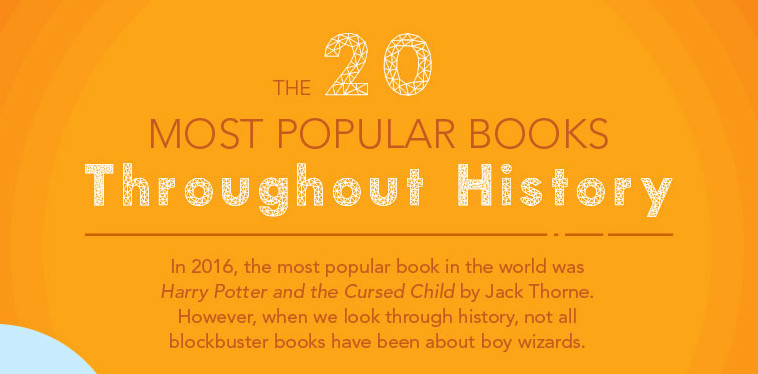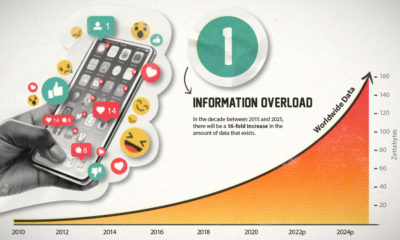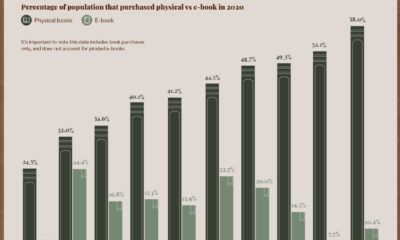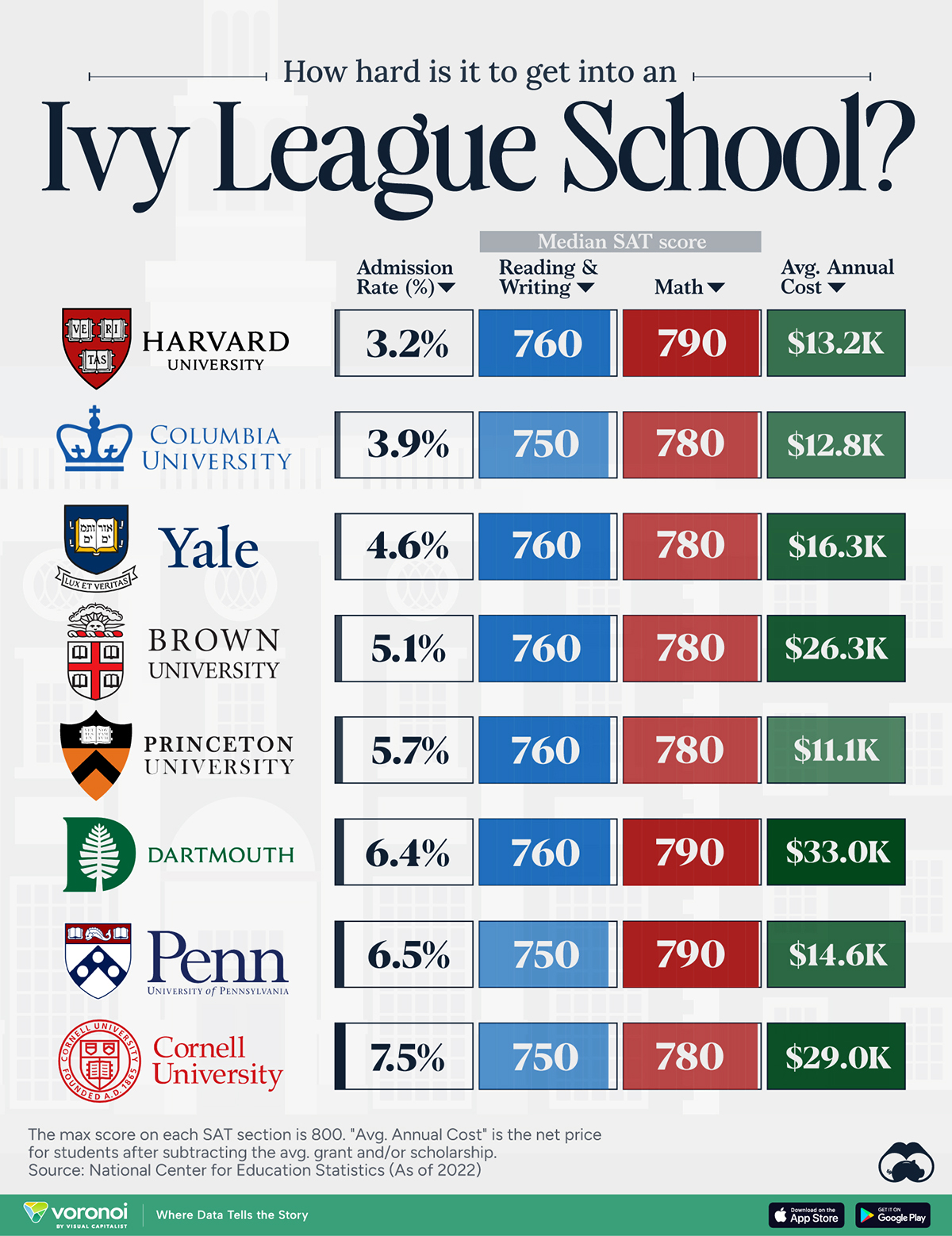Misc
The Most Popular Books in History All Shared One Trait
Throughout history, people have turned to works of literature for guidance, entertainment, and education. Modern businesses aim to tell stories that leave a long-lasting impact as well, and should look to examples of historical success to influence how they create their own content.
Today’s infographic comes to us from Global English Editing, and it looks at 20 of the most popular books in the world. All of the books listed, even those published decades or centuries ago, have made an enduring impact on readers to this day. They have achieved this by stirring discussion and sparking debate wherever they are read.

Controversy: The Evergreen Theme
One of the important traits shared by every book on this list is the controversy that has swirled around each of them. This can be seen across different time periods and genres.
People have questioned the identity and authorial authenticity of Homer and decried the upending of creationism proposed by Darwin. Even a children’s book like the modern bestselling series, Harry Potter, can be a magnet for discussion over what is morally right and wrong.
It is often the case the that most popular and enduring literary works will not only captivate, but also address controversial issues in such a way that people will be talking about them for generations.
Lessons From History
The recent bestselling streak of George Orwell’s 1984, first published in 1950, is an interesting illustration of this trend.
The dystopian novel was banned upon its translation and release in the former USSR due to its implicit critique of Stalinist political ideology. By contrast, in the 1970s and 1980s, several American counties challenged 1984 on the grounds that it might promote communist ideals. In the 21st century, Orwell’s best-known work has been revisited by a new generation of readers as the American political climate continues to create new uncertainties about governance, the distortion of facts, and social control.

For Business Content, Bold Will Hold
The most popular books ever written can teach modern businesses a great deal about what it takes to make content that is evergreen, meaningful, and primed to engage their readers. Creating discussion is key in the age of the reactive “hot take” style of article. Your ability to stand out in the cultural, historical, or political context for having a point of view that many people find worthy of debating will give your work the staying power it needs.
Considering that within any given minute there are 2.4 million Google searches taking place and over 700,000 people logging into Facebook, this is no easy task. But whether it’s through a new product or via customer engagement, creating meaningful discussion is key to making a business’ voice heard through all the noise.
Misc
How Hard Is It to Get Into an Ivy League School?
We detail the admission rates and average annual cost for Ivy League schools, as well as the median SAT scores required to be accepted.
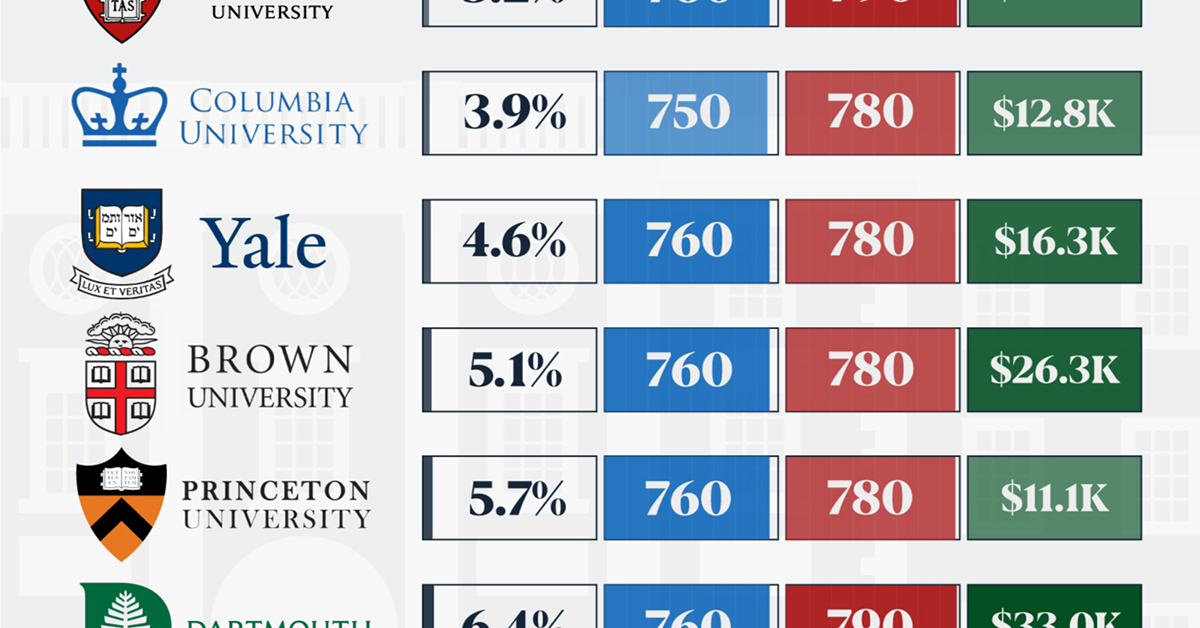
How Hard Is It to Get Into an Ivy League School?
This was originally posted on our Voronoi app. Download the app for free on iOS or Android and discover incredible data-driven charts from a variety of trusted sources.
Ivy League institutions are renowned worldwide for their academic excellence and long-standing traditions. But how hard is it to get into one of the top universities in the U.S.?
In this graphic, we detail the admission rates and average annual cost for Ivy League schools, as well as the median SAT scores required to be accepted. The data comes from the National Center for Education Statistics and was compiled by 24/7 Wall St.
Note that “average annual cost” represents the net price a student pays after subtracting the average value of grants and/or scholarships received.
Harvard is the Most Selective
The SAT is a standardized test commonly used for college admissions in the United States. It’s taken by high school juniors and seniors to assess their readiness for college-level academic work.
When comparing SAT scores, Harvard and Dartmouth are among the most challenging universities to gain admission to. The median SAT scores for their students are 760 for reading and writing and 790 for math. Still, Harvard has half the admission rate (3.2%) compared to Dartmouth (6.4%).
| School | Admission rate (%) | SAT Score: Reading & Writing | SAT Score: Math | Avg Annual Cost* |
|---|---|---|---|---|
| Harvard University | 3.2 | 760 | 790 | $13,259 |
| Columbia University | 3.9 | 750 | 780 | $12,836 |
| Yale University | 4.6 | 760 | 780 | $16,341 |
| Brown University | 5.1 | 760 | 780 | $26,308 |
| Princeton University | 5.7 | 760 | 780 | $11,080 |
| Dartmouth College | 6.4 | 760 | 790 | $33,023 |
| University of Pennsylvania | 6.5 | 750 | 790 | $14,851 |
| Cornell University | 7.5 | 750 | 780 | $29,011 |
*Costs after receiving federal financial aid.
Additionally, Dartmouth has the highest average annual cost at $33,000. Princeton has the lowest at $11,100.
While student debt has surged in the United States in recent years, hitting $1.73 trillion in 2023, the worth of obtaining a degree from any of the schools listed surpasses mere academics. This is evidenced by the substantial incomes earned by former students.
Harvard grads, for example, have the highest average starting salary in the country, at $91,700.
-

 Real Estate2 weeks ago
Real Estate2 weeks agoVisualizing America’s Shortage of Affordable Homes
-

 Technology1 week ago
Technology1 week agoRanked: Semiconductor Companies by Industry Revenue Share
-

 Money1 week ago
Money1 week agoWhich States Have the Highest Minimum Wage in America?
-

 Real Estate1 week ago
Real Estate1 week agoRanked: The Most Valuable Housing Markets in America
-

 Business2 weeks ago
Business2 weeks agoCharted: Big Four Market Share by S&P 500 Audits
-

 AI2 weeks ago
AI2 weeks agoThe Stock Performance of U.S. Chipmakers So Far in 2024
-

 Misc2 weeks ago
Misc2 weeks agoAlmost Every EV Stock is Down After Q1 2024
-

 Money2 weeks ago
Money2 weeks agoWhere Does One U.S. Tax Dollar Go?

